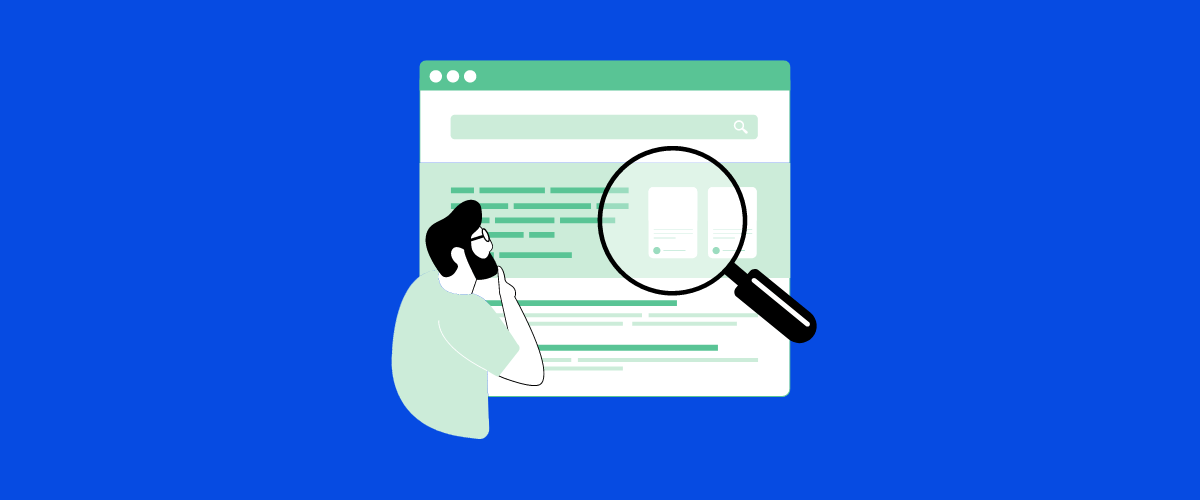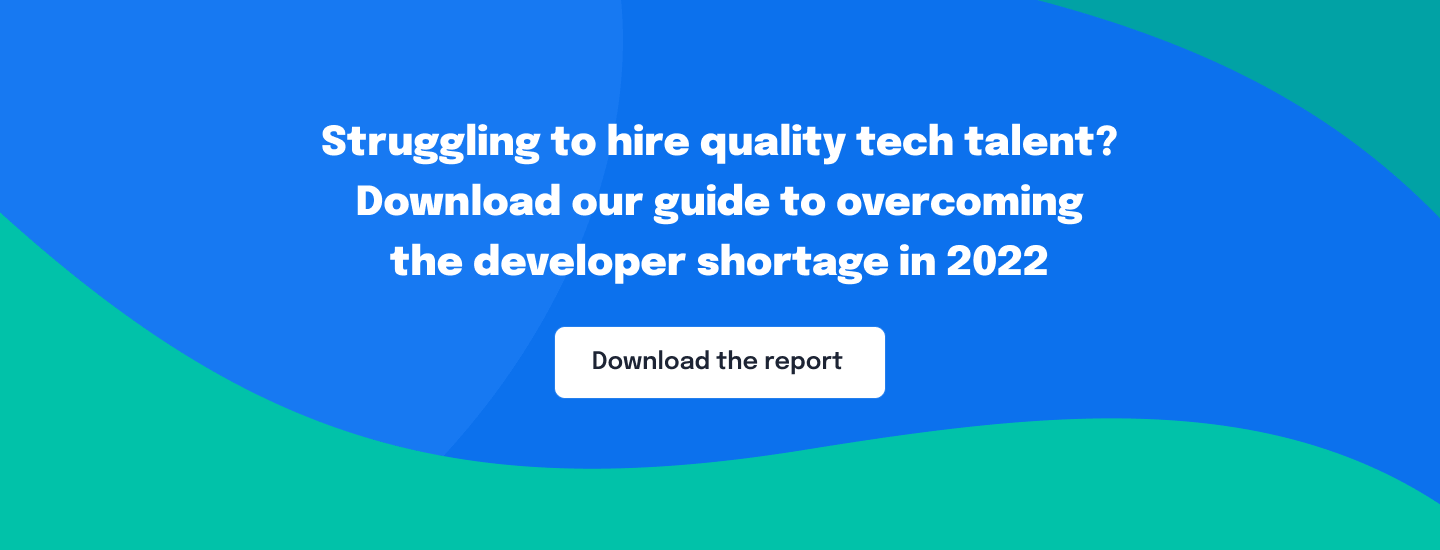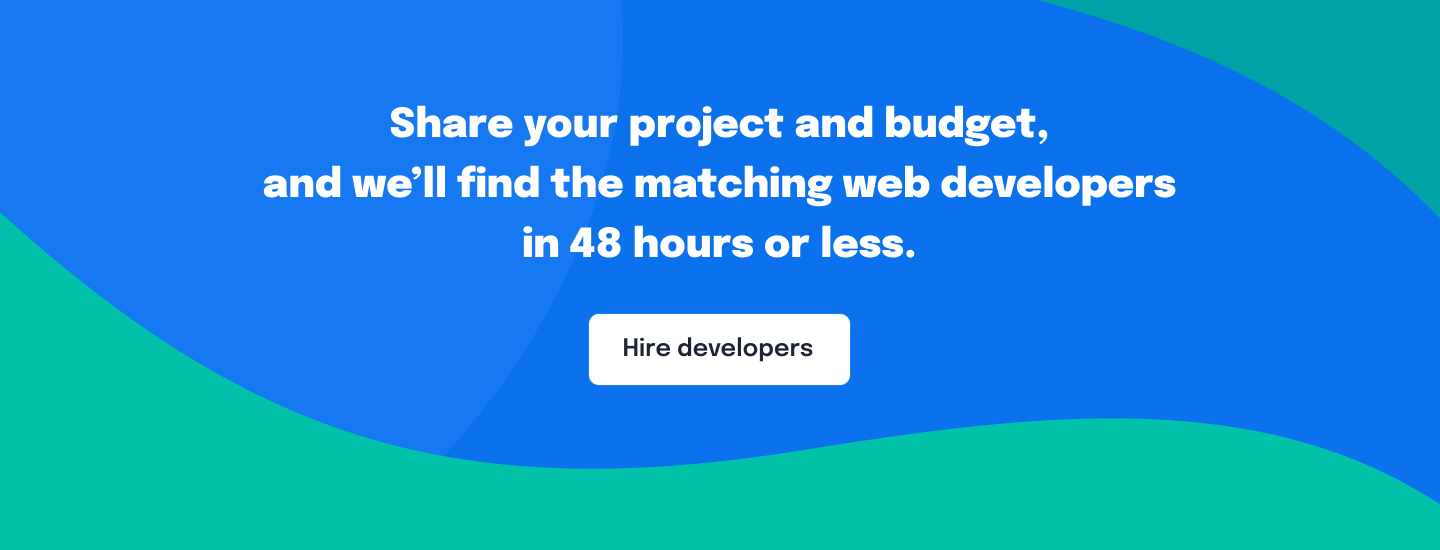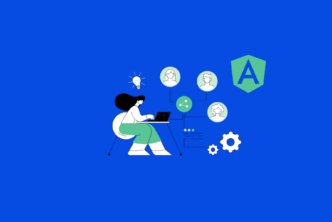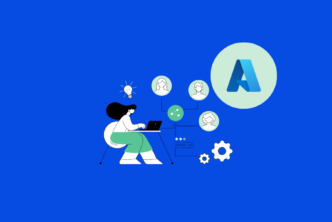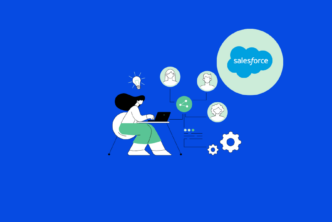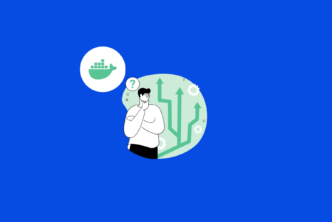Web design and development are interchangeable phrases. Almost every web design agency/digital marketing agency claims they offer both services. Most of them have the capability, either in-house or to work with partners and deliver other project elements for a client.
When considering web design or web development agencies to work with, it’s helpful to know that design and development are very different. Depending on your goals, you may only need design, development, or both.
Is your goal to:
- Build a new website from scratch.
- Improve user experience and interactions.
- Optimize your website for better SEO (Search Engine Optimization) and conversion rates, marketing purposes, sales, etc.
- Rebuild a backend system.
But without clarity of the hiring purposes, it can be challenging to get the outcomes you need.
After the read, you will know about design and development differences. It will help pick the right developers and designers to make you a professional website.
Table of Contents
What are website design and development services?
Although people use website design and development words interchangeably, they mean two distinct elements of designing and building a custom website.
What is a Website Design?
Website design refers to how a website looks and feels. The design aspects include the user experience, how web visitors navigate the website, and how the design impacts web visitor outcomes. For example, do you want web visitors to buy something on the site where you need an e-commerce feature? Is the website a lead generation magnet? If you consider gathering your leads through an email course, how should the page look? In which case, a designer needs to create a landing page that attracts potential buyers into your companies sales funnel.
Web designers use various tools and technology solutions to design websites. Some of the most popular include Adobe InDesign and Photoshop, and InVision. They also use code like HTML and CSS (Cascading Style Sheets). There are even free landing page builders available that can help you build a converting landing page in no time. During the design process, skilled designers should maintain regular contact with clients to ensure they’re getting what they want. Designers are responsible to create a logo, craft a website style that transfers the brand identity and message, and other visual elements. Designers can quickly produce initial logo designs or look for inspiration using the ease and adaptability of an online logo maker tool.
Designers are also referred to as front-end developers or UX/UI designers, since much of the work is now focused on the user experience and how a website looks and feels.
User Experience (UX) designer
UX design comes in the early stages when your idea is just a concept. UX designers carry out in-depth target audience analysis, predict your customer behaviors, and implement the consistency of your brand into the prototypes to fulfill the needs of your prospective users.
During the UX design stage, you may expect them to conduct interviews, researches, gather focus groups, build a user journey map, create usability starting, design, and test again to make your website user-friendly. After that, UI designers get into the game. Together with UX designers, they create wireframes to use them further as a blueprint for software structure.
User Interface (UI) designer
A UI web designer helps to improve user interaction with elements. They try to create the interactions between user and service in a user-friendly way that adds value to the customers. UI design requires an understanding of front-end development and know some coding. Designers mainly focus on choosing color and typeface, designing buttons, icons, sliders, and scrollbars (creating UI kit), building a responsive design, making the interactive parts. They ensure the design is predictable and doesn’t require users to think twice about finding needed information on the website.
Web designers
Web designers may work in graphic design and have experience in web work. They also may be developers who have the skill set to put together a good-looking website. Web designers don’t go deep into integrating UX design logic during website creation. Web designers usually use templating systems such as WordPress, or actual website creation platforms, like Elementor, to build a website without writing much custom code. Others specialize in developing a WordPress theme from scratch, creating a unique framework for your site. Custom theme development leads to better brand recognition, improved customer experience, and as a result, a boost in sales. It’s important to factor in custom web design cost when deciding between template-based and custom theme development.
What is Website Development?
Web development, on the other hand, refers to how a website functions.
For some basic websites, development isn’t needed or is only involved in the early stages when templates need to be uploaded to servers. After that point, a designer can create the website using a template. Most UI designers are good at HTML, CSS the same way as front-end developers.
However, for most clients, custom coding work is preferable. In that case, companies need to look for front-end and back-end or full-stack developers. Depending on the number of pages, features, and complexity of the website and coding, this work could take days or weeks.
Developers still need to work with designers during this process. It will be up to the developer or a project manager to contact the client and coordinate the design and development process. Once a website is ready–they are usually built on a staging site–a client can review the work, suggest changes, and then plan for the day when the new website can go live. At that point, you sign off a project, and any future work or ongoing maintenance or hosting can be agreed upon before sending a final invoice. Throughout the process and after it, consider having a coaching invoice template ready.
Let’s understand the role of front-end and back-end developers in the web development process.
Front-end developers
Front-end developers ensure your users may seamlessly interact with your product, whether you are building software, mobile app, or web application. A front-end developer is responsible for implementing design changes, testing and handling bugs, developing seamless user interactions, writing a clean and safe code, optimize your website according to SEO tech principles.
Here is the average salary in the US cities that you will need to pay for front-end developer services:
| New York | $114,200 |
| Los Angeles | $110,515 |
| San Francisco | $155,761 |
| Denver | $107,284 |
| Chicago | $110,923 |
| Austin | $108,569 |
*Take into consideration that the salary rates would vary due to location and the developer’s experience, programming languages, level of seniority, etc.
Back-end developers
A back-end developer works with the server-side of your product. They facilitate data exchange between your app and database and tie the front-end and back-end to your software to ensure smooth functionality. Back-end developers usually use such programming languages and technologies as Ruby on Rails, JavaScript, Java, C#, and you can find some developers who work with APIs.
Here is the average salary in the US cities that you will need to pay for back-end developer services:
| New York | $142,465 |
| Seattle | $134,435 |
| San Francisco | $165,982 |
| Chicago | $119,618 |
| Mountain View, California | $139,550 |
| Las Vegas | $102,853 |
Website design trends
When thinking about your new website, it’s helpful to know trends and what consumers expect as web design changes over time. There are over 1.8 billion websites on the world wide web today. The pandemic time significantly accelerated digital transformation and the need for an online presence.
In 2024, the following trends are creating a significant impact on the web design & development niche:
1. Speed
Google already penalizes slow websites. It plays a significant part in May and July Google core updates. If your website doesn’t fully load in 2.5 seconds, then you can expect a considerable number of web visitors won’t hang around long enough to wait. And of course, don’t forget about AMP pages and AMPHTML ads. Today this technology is already becoming the standard and helps to create high-speed projects for your business.
2. Minimalist and flat
Creating websites with mobiles in mind is essential.
Consequently, the overall design should aim to be flat and minimalist. Overly complex websites with confusing user experiences and journeys don’t appeal to a mobile-first audience. Keeping things simple will make it easier for you to achieve your website’s goals and ensure that users get where they need to go. It is recommended to use only optimized graphics and vector images. It should also keep loading times quick, thereby keeping your potential customers on your website instead of going to a competitor. Working with video production companies is a good way to create beautiful, engaging visuals for your website but still remain within performance parameters to ensure your website loads quickly and consistently on all devices. However, you may also notice many applications in Neumorphism and Glassmorphism styles, coming against forced minimalism.
3. Mobile
A trend that hadn’t gone away since 2017, when mobile searches overtook desktop searches, as 41.61% of web traffic is coming from desktops and more than 50.81% of global website traffic is coming from mobile.
Instead of designing a desktop version of an optimized website for mobile devices, designers create mobile-friendly websites that work on desktop browsers. This crucial fundamental shift must be at the forefront of your design process, especially after Google’s June 2022 core update that emphasizes mobile-friendliness.
4. Video backgrounds
Video backgrounds is another trend taken off a few years ago and will only increase into 2024. Videos are more effective at capturing the attention of web visitors, showing instead of telling. It doesn’t need to be a long customer onboarding video or cinematic masterpiece; it simply needs to promote your value proposition and clearly show what your company does. To make your videos even more eye-catching, you can use a green screen background to add an extra layer of visual appeal.
5. Micro-animations
Another way to keep web visitors’ attention is with short (a few seconds at most) micro-animations throughout your website. It can be a great way to quickly get across a complex subject or encourage users to click on a call-to-action (CTA), such as a ‘buy now or ‘call us’ button or a menu.
Micro-animations are everywhere, and they help web visitors know they’re taking the right actions, the actions you want them to take on a website. We fully expect this trend to continue into 2024 and beyond.
6. Chatbots
Web visitors are active every hour of the day and night. But that doesn’t mean you need someone to manage the website 24/7. With chatbots, you can provide customer service around the clock and ensure that a service is in place to answer questions.
More and more websites are turning to website chatbots to provide answers to customer questions. You can program them with frequently asked questions, then the AI/machine learning that runs in the background picks up on keywords and phrases, then provides answers and more information. Depending on your website, some enable automatic purchasing, increase revenue through e-commerce channels.
7. Dark mode
The dark mode has been the hottest trend over the past year. Such brands as Apple, Instagram, Facebook, and Android offer their customers to switch to the dark mode theme or provide the option to change the settings according to the time of the day. Many applications allow users to choose if they want to turn on the dark mode. Dark background enables design elements to stand out and become aesthetic. It’s also better for eye strain when the light is dull.
These are some of the most prominent trends we expect will continue into 2024. Now let’s consider how to pick the right design and development team.
How to select the right design or web development company for your project?
1. Track record
Before picking designers, developers, or an agency, you should understand what they can deliver for you through a portfolio. Ask for examples if one isn’t available on their website (not every company wants to broadcast this due to competitors’ risk of stealing clients).
Agencies and developers/designers who have worked with similar companies are positive signs, a mix of B2B and B2C experience. It is equally helpful to view websites they’ve built on mobile devices to make sure they’re keeping up with industry trends and affairs. You may also check their employees’ portfolios on Behance or Github if they have any displayed.
2. Cost-effective
Designers and developers should offer a price that seems ‘just right.’ Prices that seem too reasonable usually mean that work could be rushed, or you end up with a poor-quality or template-designed website that won’t achieve what you want. It might even be necessary to get another company or team to rebuild it.
Avoid working with designers and developers that appear to look like a bargain. But at the same time, if a quote seems excessive, walking away is smarter than going over budget.
Before hiring a design or dev team, explore the option of hiring. There are three different hiring solutions influenced by geography: local talents, nearshore programmers, and offshore developers/ dev teams.
Then decide on what employment type you would prefer. Would you like to hire a dedicated team with a project manager or Scrum master, a freelancer through Upwork/Toptal, or would you opt for staff augmentation and hire contractors through marketplaces such as YouTeam?
Keep in mind that there may be a huge salary difference depending on the country you would like to outsource to and the hiring model you have chosen.
Browse 500+ Dev Teams Available for Hire
3. Design skills
Before working with any designer, make sure you’ve seen examples of their work. It will give you a sense of what they can do for your website and discuss your ideas with them. Ideally, during the costing process, they should put together a few ideas for this. In some cases, a designer will create a stylized mockup during the discovery phase, giving you the option to pick the overall design you want them to make.
4. Coding knowledge
In the same way, you need to know the developer – or team creating your website’s back-end has the relevant coding skills and knowledge. And that you can see examples of similar websites built using the same languages and technology stack. Verifying a developer’s hard skills is also a crucial step. You can start the interview by asking about their work experience. Then ask relevant questions about the programming language you want your website to build on. Ensure you give a coding assignment; it can be real-time coding or a task with a deadline.
5. Responsive customer service
Getting a website designed and developed is a collaborative process. And during this process, you need to be confident in the company or team doing the work. Poor or infrequent communication is a bad sign. Ensure those doing the work are responsive and take on board any feedback and changes you want to make.
There are a few factors that can influence your communication. Did you decide on offshore outsourcing? Ensure at least 3 hours overlap between your time zones to prevent project delays. Before the start of the project, decide on a communication channel and assign responsibilities. Do you have a tech person like CTO in the team who will overlook the project delivery? Who is going to be responsible for communication from the service provider side? Did you set milestones?
6. Certifications
Developers that have certificates to demonstrate the skills they have are a valuable asset. Certification and accreditation are advantageous for companies with the in-house talent to deliver more complex projects. Certificates from industry giants like Google, Adobe, Rackspace, and Amazon Web Services are worth looking for and asking about.
7. Positive reviews
As with any purchase, make sure you work with professionals with positive reviews and customer testimonials. Ask to see them if they’re not forthcoming, or ask for a couple of clients you can email for a reference. Don’t hesitate to email previous clients and ask about the project delivery, quality, issues. You may check top web design companies on Clutch.co, Glassdoor, G2 for their reviews.
8. Timeline
Service providers should keep to agreed timescales. Usually, the agency quotes a project for the overall work, not how many hours a team works on a website. Otherwise, you risk projects taking longer than expected, resulting in higher costs.
To sum up, let’s check on more time the most important things about each step of selecting the right design or web development company.
| Considerations | Description |
| Track Record | Check portfolio for experience and previous work. Look for B2B and B2C projects. Ensure mobile-friendly sites. |
| Cost-effectiveness | Avoid overly low-priced offers; consider hiring options (local, nearshore, offshore). Balance cost and quality. |
| Design Skills | Review designers’ work, discuss ideas, request mockups. Choose a design that aligns with your vision. |
| Coding Knowledge | Verify developers’ coding skills, experience, and examples. Assign coding tests. |
| Responsive Customer Service | Ensure open communication and responsiveness. Consider time zones for offshore outsourcing. Define channels and milestones. |
| Certifications | Look for relevant certifications from reputable organizations. |
| Positive Reviews | Check for positive reviews and testimonials. Request references if needed. Use review platforms. |
| Timeline | Ensure adherence to agreed timescales. Clarify project pricing. Avoid potential delays and higher costs. |
When getting a website built, know whether you are looking for a custom-coded or template website. Knowing this should guide you in whether you require a website designer or developer or a team that can do both. Please make sure they’re aware of industry trends, have a portfolio and client testimonials, charge a reasonable price, and are capable of delivering when they say they will.
Why is YouTeam the Best Partner to Help You Hire web developers and designers?
It may take quite a lot of time for you to look for a company that provides development services, find professionals with the required skills and experience, review testimonials, etc. YouTeam’s marketplace has access to 50,000 high-quality developers from Eastern Europe and Latina America that helps hire quickly.
- Sourcing candidates: YouTeam needs only up to 48 hours to find the best matching candidates for your company, which is fast!
- Hire top-tier developers: Our vetted engineers and designers are not freelancers. However, via our platform, you have the final word regarding your staff augmentation. YouTeam allows you to host interviews with as many developers/designers as you need. At the same time, we encourage you not to hesitate to hire as soon as you interview a good developer/designer. Due to the current market situation, senior developers/designers receive a few offers simultaneously, so you should secure your choice with an offer.
- Good reviews from previous clients: YouTeam clients fully trust the platform’s vetting process and choose to stay with YouTeam after trying our matching service.


